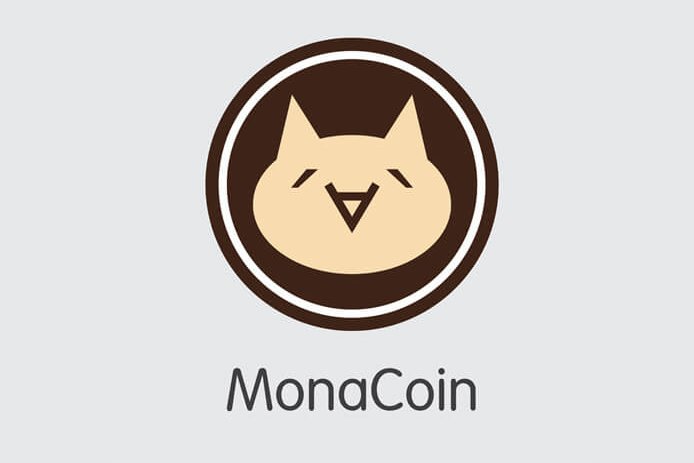

MonaCoin is a Japan-based cryptocurrency that came to life in 2014. The cryptocurrency is based on a Japanese ASCII art character that looks like a cat. MonaCoin describes itself as a cryptocurrency that “continues to be nurtured and built upon not by a core development team, but by its enthusiastic user base”.
MonaCoin is a hard fork of Litecoin and was created by pseudonymous founder Watanabe. The coin was initially launched on 2 Channel, a Japanese website and the forebearer to the more famous 4chan in the West.
To secure the blockchain, it uses a Proof-of-Work hashing algorithm, and its website states that there was never any pre-mine of the cryptocurrency to ensure decentralisation. MonaCoin is similar to Vertcoin in that its hashing algorithm is ASIC resistant.
The coin has a block time of 1.5 minutes – 1 minute less than Litecoin – and there is a total supply of 105 million coins with around 65 million currently in circulation.
Like Bitcoin and Litecoin, MonaCoin has implemented SegWit and will be able to harness the Lightning Network as well. The coin is similar to both Litecoin and Vertcoin in this respect.
The cryptocurrency is available on the Japanese exchange BitBank – where it can be traded with yen – and also on Bittrex where it is paired against Bitcoin.
The community surrounding MonaCoin does not view the project as a speculative investment. Rather, users believe MonaCoin is a viable payment solution. This notion was given a significant boost when the Japanese government allowed for MonaCoin to be accepted by vendors, with many stores – both online and physical – now accepting the cryptocurrency.
MonaCoin is very popular within its home nation of Japan, but it has struggled to find wider relevance outside of the nation. With the cryptocurrency being very specific to Japanese culture and by not providing a unique selling point, this is unsurprising.
There are many interesting quirks coming from the community. According to the MonaCoin website, there are many “Mona-based web applications and services” and people have “erected shrines in appreciation of MonaCoin and regularly play word-games when tipping others”.
MonaCoin shares similarities to Dogecoin in that it doesn’t take itself too seriously and allows the community to have fun with the cryptocurrency.
There are positives and negatives when viewing MonaCoin’s price history.
Firstly, the positives. Even though MonaCoin is rather limited to a Japanese audience, the coin still ranks just outside the top 100 cryptocurrencies according to coinmarketcap.com, with a market cap of just over $40 million. With a daily volume averaging in the hundreds of thousands, there are clearly people who are using the cryptocurrency.
However, the coin prides itself on not being a speculative asset. One look at the chart though shows MonaCoin behaving precisely as most other cryptocurrencies.
MonaCoin has been relatively stable between $0.04 and $0.10 during most of its lifetime. Like most other cryptocurrencies though, MonaCoin saw a huge spike in price during January 2018, shooting up as high as $14. Unfortunately, like the rest of the market, MonaCoin could not avoid the speculative nature of cryptocurrencies.
In May 2018, a miner was able to hack the MonaCoin chain and secretly established a longer chain. This was around the same time that Bitcoin Gold and Verge also suffered a similar fate. The attack however was not too severe and only cost around $90,000. Despite the relatively little amount of money lost, it does affect the confidence that users might have in the chain.
Another theft, although this time not the MonaChain blockchain’s fault, took place when an 18-year-old Japanese boy managed to steal ¥15,000,000 ($134,500) from a website that stored the cryptocurrency. The boy has since been caught and referred to the Japanese prosecutors office – the first time a cryptocurrency hack has been pursued in Japan.
As the coin is quite limited to the market of Japan, neither event appears to have hit the cryptocurrency too hard.
MonaCoin is unlikely to ever become a mainstream cryptocurrency in the West, but it doesn’t need to be. The cryptocurrency has carved a niche out for itself in its home country of Japan and follows some admirable rules.
Firstly, MonaCoin is attempting to keep itself as decentralised as possible by avoiding ASICs and allowing the community itself to develop the coin. There was no pre-mine and there’s no central authority that can control the fun cryptocurrency.
Whilst the meme-like cryptocurrency might not break into the mainstream, it has already achieved its goal of becoming a popular cryptocurrency in Japan.
Denver, Colorado, 24th February 2025, Chainwire
Denver, Colorado, 20th February 2025, Chainwire
Washington, D.C., 18th February 2025, Chainwire
Dubai, UAE, 27th January 2025, Chainwire
Those who enter the market at this time may be surprised to hear that Bitcoin…
George Town, Grand Cayman, 22nd November 2024, Chainwire